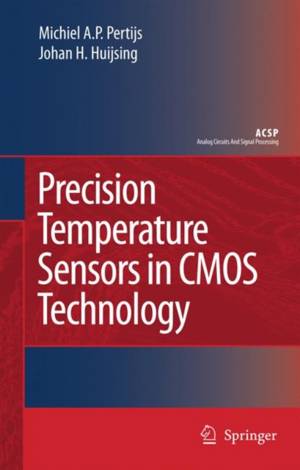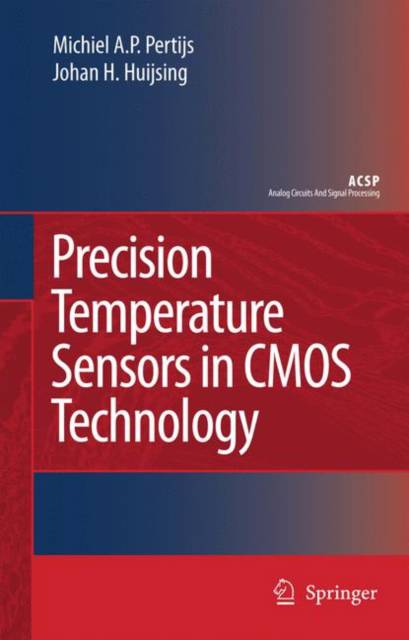
- Afhalen na 1 uur in een winkel met voorraad
- Gratis thuislevering in België vanaf € 30
- Ruim aanbod met 7 miljoen producten
- Afhalen na 1 uur in een winkel met voorraad
- Gratis thuislevering in België vanaf € 30
- Ruim aanbod met 7 miljoen producten
Zoeken
€ 251,45
+ 502 punten
Uitvoering
Omschrijving
The low cost and direct digital output of CMOS smart temperature sensors are important advantages compared to conventional temperature sensors. This book addresses the main problem that nevertheless prevents widespread - plication of CMOS smart temperature sensors: their relatively poor absolute accuracy. Several new techniques are introduced to improve this accuracy. The effectiveness of these techniques is demonstrated using three prototypes. ? The ?nal prototype achieves an inaccuracy of±0.1 C over the military t- perature range, which is a signi?cant improvement in the state of the art. Since smart temperature sensors have been the subject of academic and industrial research for more than two decades, an overview of existing knowledge and techniques is also provided throughout the book. Inthisintroductorychapter, themotivationandobjectivesofthisworkare- scribed. ThisisfollowedbyareviewofthebasicoperatingprinciplesofCMOS smart temperature sensors, and a brief overview of previous work. The ch- lenges are then described that need to be met in order to improve the accuracy of CMOS smart temperature sensors while maintaining their cost advantage. Finally, the structure of the rest of the book is introduced.
Specificaties
Betrokkenen
- Auteur(s):
- Uitgeverij:
Inhoud
- Aantal bladzijden:
- 292
- Taal:
- Engels
- Reeks:
Eigenschappen
- Productcode (EAN):
- 9781402052576
- Verschijningsdatum:
- 19/10/2006
- Uitvoering:
- Hardcover
- Formaat:
- Genaaid
- Afmetingen:
- 156 mm x 234 mm
- Gewicht:
- 616 g

Alleen bij Standaard Boekhandel
+ 502 punten op je klantenkaart van Standaard Boekhandel
Beoordelingen
We publiceren alleen reviews die voldoen aan de voorwaarden voor reviews. Bekijk onze voorwaarden voor reviews.








